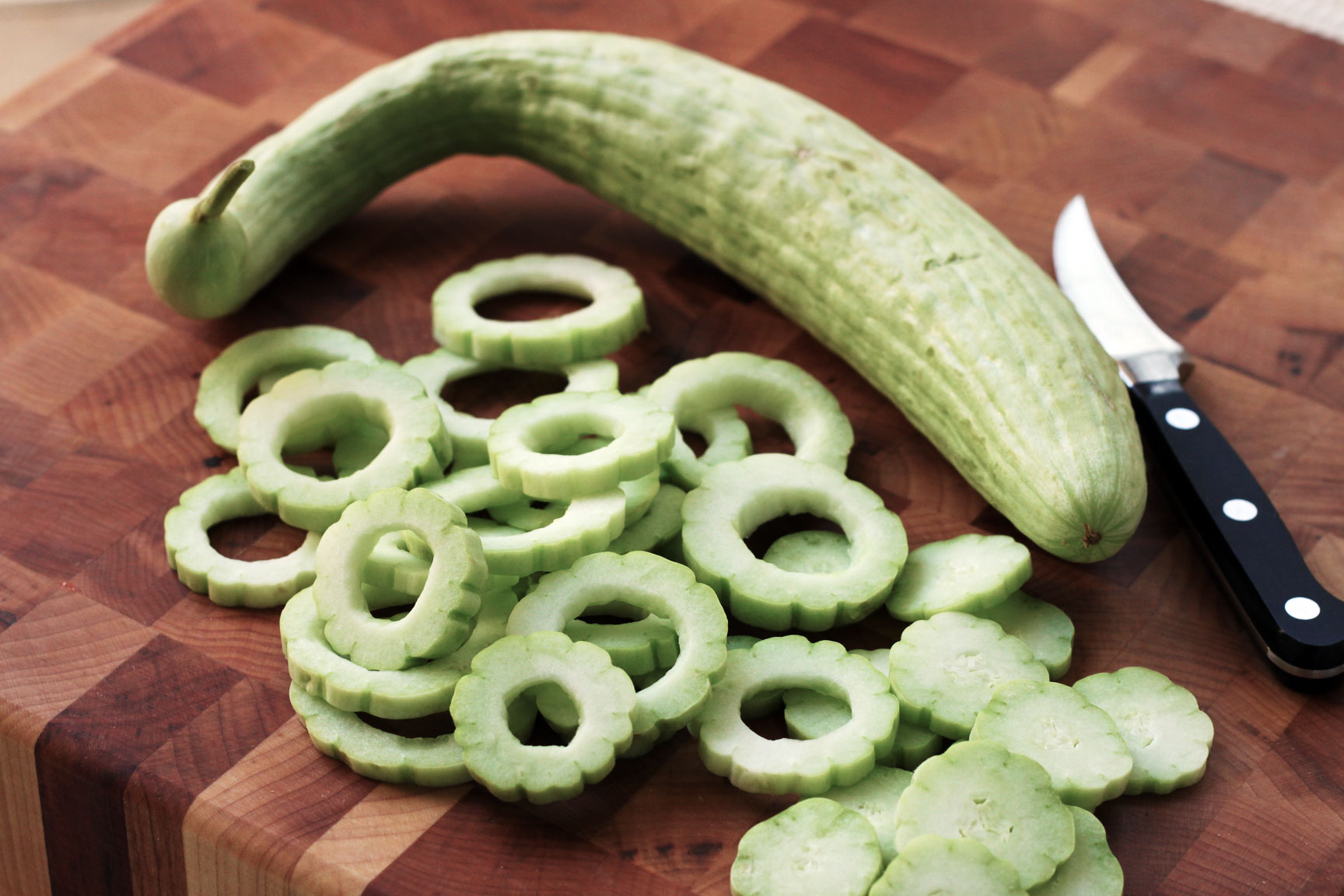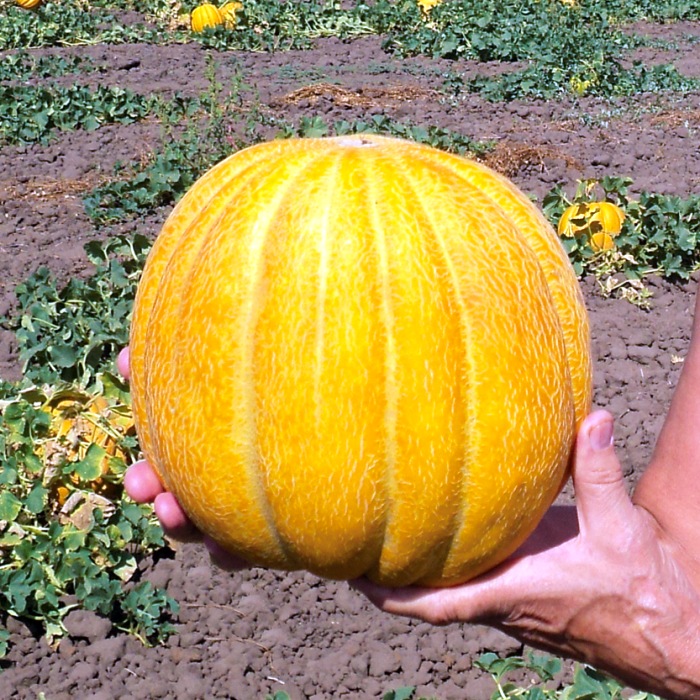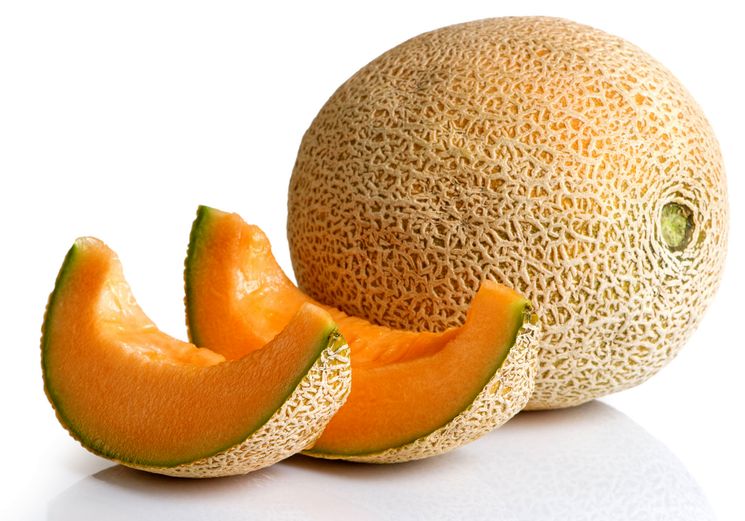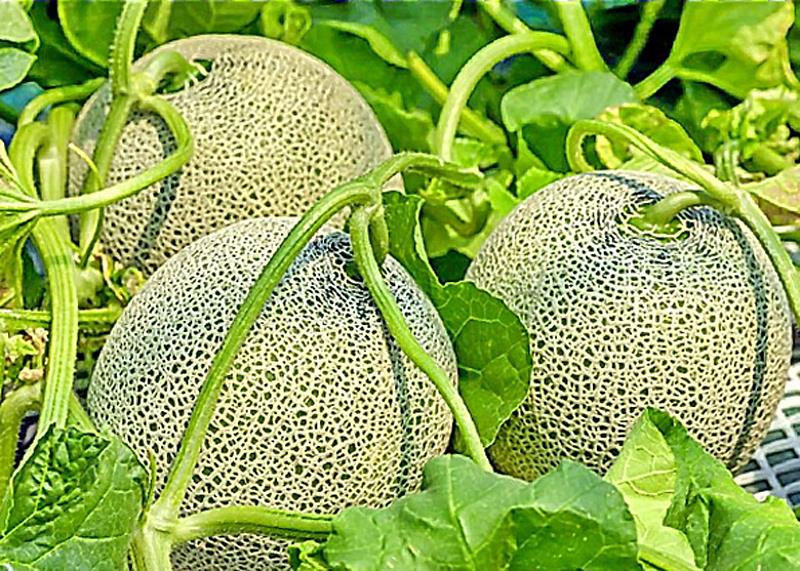Content:
Cantaloupe is a berry of melons. Its other name is Cantaloupe. This variety is also called Thai melon. The reason for this name is that a large amount of Cantaloupe is grown in Thailand. It is considered a mid-season fruit.
Description
Cantaloupe is not the most famous variety. Therefore, the question often arises: cantaloupe - what is it? It is an oval or slightly flattened fruit. The skin is smooth or covered with a white retina. The fruit weighs between 0.5 and 1.5 kg. The size of the melon is no more than 25 cm. The flesh is orange or yellow, the taste is sweet and very juicy. Has a unique musky aroma. Melon Cantaloupe is a variety of Muscat variety.
The leaves are large, dark green in color. Both male and female flowers are on the stems, therefore the plant needs pollination by bees. If this is not possible, in order to have a harvest, it is necessary to manually pollinate the flowers.
Eating the fruit of Cantaloupe will undoubtedly bring great health benefits.
Melon Cantaloupe has a low calorie content, only 53 Kcal, so it can be consumed by those who are struggling with excess weight.
Fruits contain more sucrose than watermelons, so they are unsafe for diabetic patients. It is useful for those who suffer from high cholesterol, high blood pressure. Juicy pulp improves the functioning of the gastrointestinal tract, helps to cope with stress.
Melon contains a lot of vitamin C, iron, potassium. It can be incorporated into cosmetic masks. Due to the large amount of folic acid, it is very useful for pregnant women. It is eaten fresh, jam is made, candied fruits are made, dried. As a rule, it is the melon of this variety from Thailand that is found on sale in dry form.
Growing features
In southern countries, it is planted with seeds directly into the ground. In the middle latitudes, melons are grown in seedlings, and the seeds are sown in peat cups in early April. To do this, in each container you need to deepen into the soil 2-3 grains of melon.
For better seed germination, you can soak them overnight in a growth stimulator or in aloe juice.
It is necessary to provide the seedlings with good lighting and water regularly with warm water. After 4-5 weeks, the first adult leaves will appear. While the plant is young, it looks like a clover. During this period, it can be planted in open ground.
Before planting seedlings, it is necessary to carry out preparatory work:
- dig up the earth shallowly, fertilize with rotted manure or compost;
- for convenience, you can make a marking of holes for seedlings at a distance of 1 m from each other.
Melon loves slightly acidic soil, loam or sandy soil. The site should be well lit by the sun.
After planting, water the seedlings with warm water.
At first, you can insulate the plant - cover it with a film, pulling it over the frame. This will serve as protection from low temperatures at night, from the burning sunlight during the day. It also prevents insects from harming the plant. The film can be used until flowering.
Melons should not be planted next to cucumbers and zucchini. Best of all, they are "friends" with tomatoes and bell peppers. It is also advisable to grow melons in the place where crops used to grow:
- nightshade;
- legumes;
- cabbage;
- greens;
- leafy and bulbous vegetables.
Watering and fertilizing
Melon Cantaloupe is unpretentious to care for, but needs regular watering, especially during dry periods. Do not pour water on the roots themselves, they can rot. It is better to make a depression in the ground nearby and pour water into it. If water has accumulated between the rows, it is necessary to stop watering or make a ditch so that it comes off. If in the heat the leaves look a little withered, you need to increase the watering.
If the plant has many side branches, it must be pinched, leaving only two.
During the season, you can feed the plant, but no more than 3 times:
- twice before flowering (with nitrogen fertilizers);
- once during flowering (potash and phosphate fertilizing).
Some experienced gardeners recommend using leftover coffee grounds as fertilizer.
During the ripening of the fruits, you need to stop watering so that they accumulate sugar. As a rule, the period falls at the end of August - beginning of September. A ripe melon is checked by the stalk; with a slight touch, it easily falls off. At the same time, it emits a strong aroma. At first, the skin of the melon is green, then it takes on a beige or light orange hue.
While the plant is small, it is necessary to regularly loosen the soil and remove weeds, otherwise they will drown out the sprouts of the melon and slow down its growth. Thai melon Cantaloupe can be tied to a small horizontal grate, and so that heavy fruits do not break off the stems, you should make a support under them.
Diseases and pests of melons
When inspecting the foliage, you may notice yellow spots. This indicates that the plant was struck by a disease - powdery mildew. Tying on melons serves as a preventive measure against this disease. Despite the fact that the variety is characterized by high resistance to various diseases, it sometimes suffers from:
- powdery mildew;
- root rot;
- aphids;
- spider mite.
Having discovered one of the problems, it is necessary to spray the plant with folk remedies or chemicals. As a preventive measure against some diseases, it is recommended to plant rye next to a melon crop.
If the stems of a plant break, a yellowish-orange liquid flows from them, this indicates mycosperellus rot. It is very difficult to cope with it, the plants may die. The next year, the soil must be treated with a fungicide.
After heavy rains, southern rot can appear, in which case you need to mulch the soil to reduce rotting.
Advantages and disadvantages
Variety advantages:
- pleasant taste;
- universality of use;
- dense skin does not allow the melon to crack;
- transportability;
- easily tolerates moisture;
The disadvantage is the short shelf life of the fetus - only three weeks. With prolonged storage, the melon loses its attractive appearance.
Melon Cantaloupe is suitable for cultivation, both on private land and for industrial purposes. It is especially appreciated for its aroma, pleasant taste and beneficial substances.

















